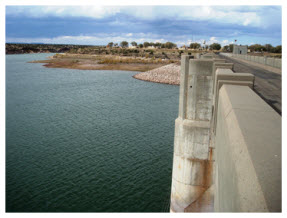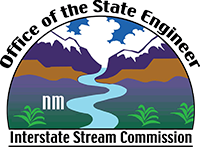Interstate Stream Commission
- OSE Home
- About ISC
- Basins
- Canadian River Basin
- Resource Issues & Solutions
Resource Issues and Solutions
The Canadian and Dry Cimarron Basins rely on a combination of surface water and groundwater for its supplies.
Major issues include:
- The area is susceptible to drought and needs drought planning. Surface flows provide a little less than half of supplies.
- The development of the 24,000 acre-feet/year safe yield of Ute Reservoir represents the best source of a renewable municipal supply, for a number of communities in Eastern New Mexico. The costs will be on the order of $300 million. Federal support may cover 50 percent to 65 percent of costs, though hopes remain for a greater federal cost share. Without development of this renewable water source, the viability of those Eastern New Mexico communities and economies is in doubt.

- Surface-water supplies above Conchas Dam are fully appropriated, and finding additional water supplies for growing populations along the eastern slopes of the Sangre de Cristo Mountains will be difficult.
- Use of the High Plains, Ogallala, and other aquifers are extensive. Water tables in those aquifers are dropping rapidly, especially in the eastern portion of the region along the Texas-New Mexico border where unrestricted groundwater pumping in Texas is depleting the aquifer. Conservation, improved irrigation techniques, development of the Ute Reservoir 24,000 acre-feet safe yield, low water use and dry-farmed crops may be necessary if current regional populations and economies are to be sustained in the future.
- The reach of the Canadian River from Logan, New Mexico, to just below Ute Reservoir has been removed from the designated critical habitat for the endangered Arkansas River Shiner. The designation of critical habitat would have had the potential to negatively affect agriculture and development of the Ute Reservoir supply. The Management Plan accepted by the US Fish and Wildlife Service in lieu of critical habitat designation relies in large part on the favorable fish surveys and ongoing monitoring funded and executed by the Interstate Stream Commission.
